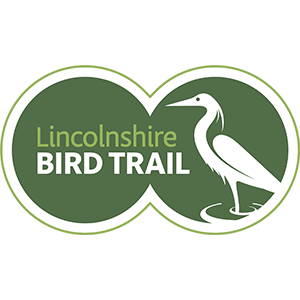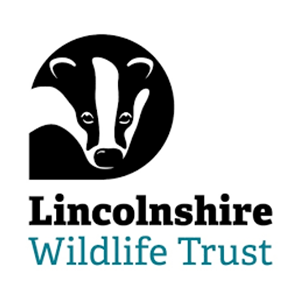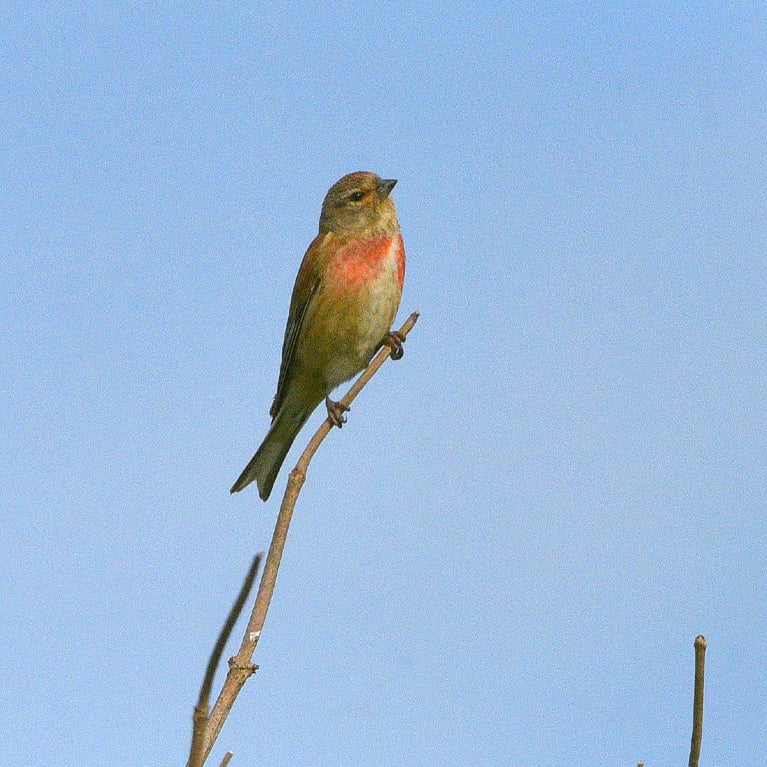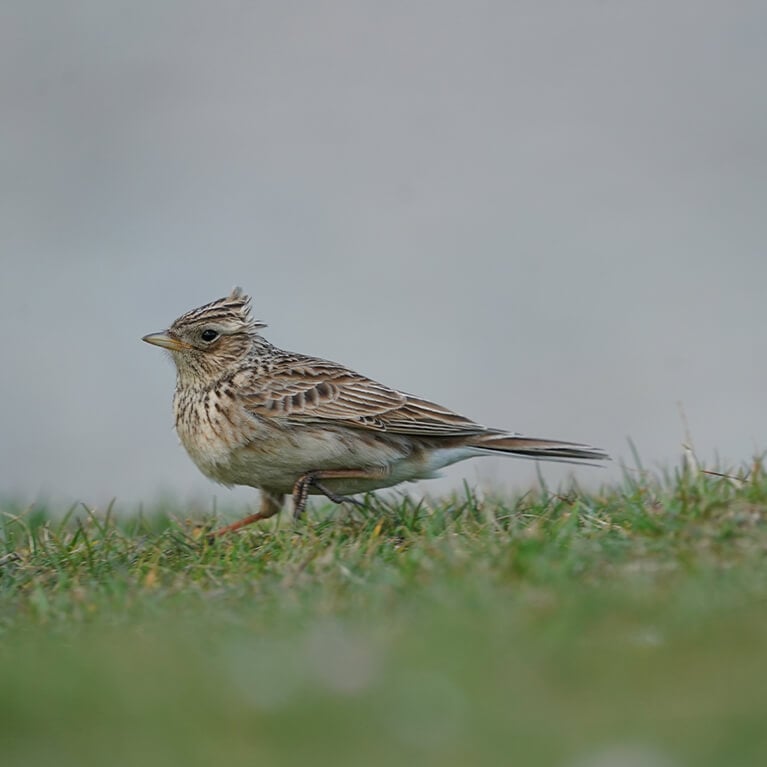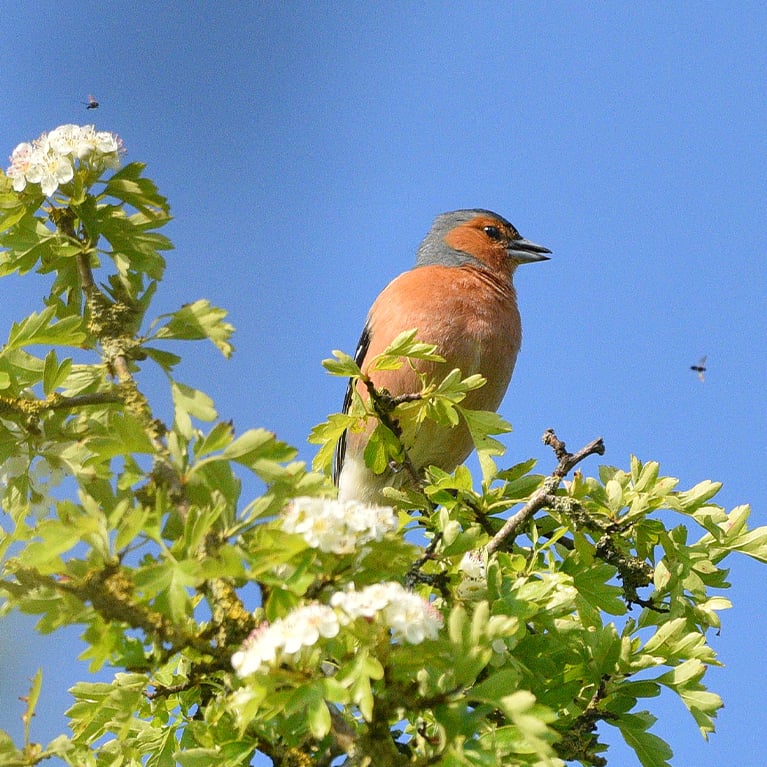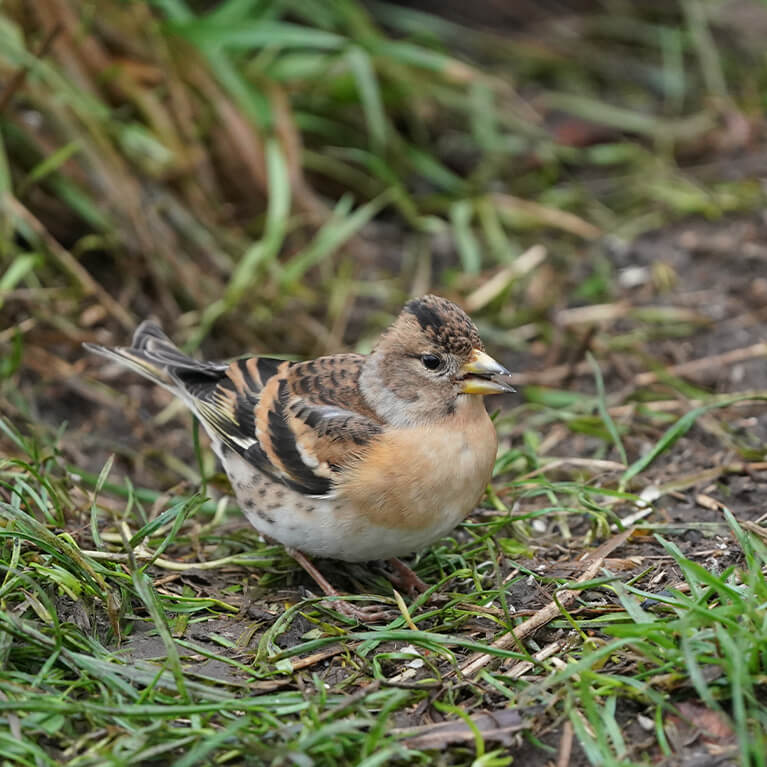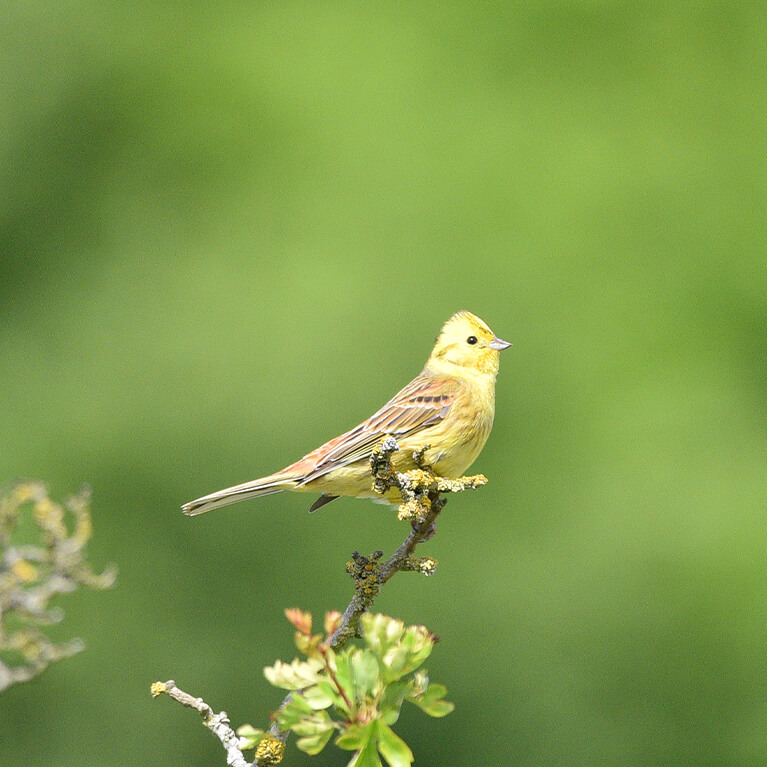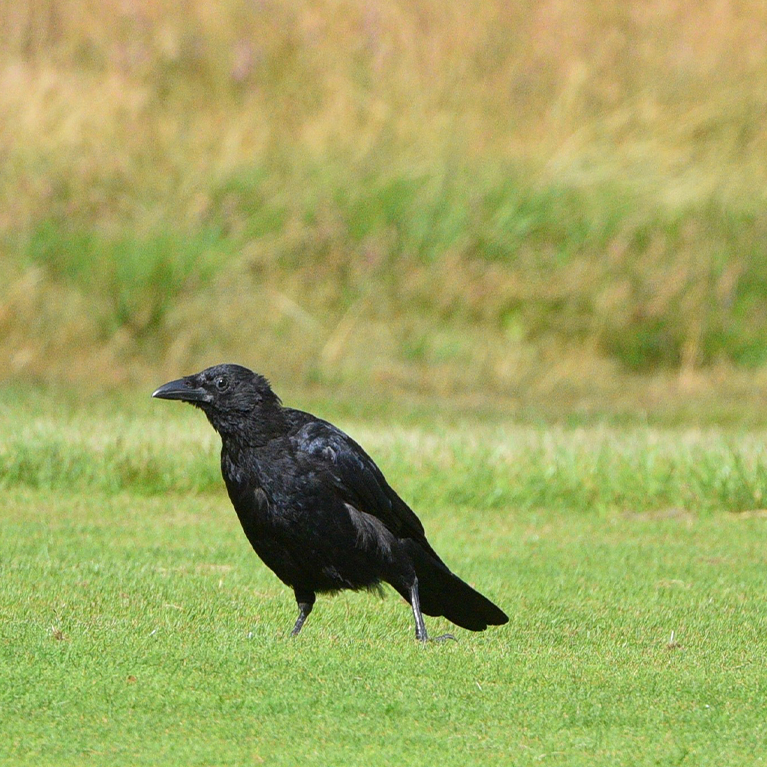Red Hill is named after the exposure of a red strata of chalk that occurs by the road here. The classic habitat of the area is chalk downland and the Coronation meadows to the south on the east side of the road have a fine display of Cowslips in April/May.
Lincolnshire Wildlife Trust
01507 526667
what species and habitats can you find?
The surrounding chalk farmland is mainly arable and the species are those of arable farmland, commoner here than many other places in the Wolds. They include quail, grey partridge, buzzard, red kite, kestrel, hobby, raven, skylark, tree sparrow, linnet, yellowhammer, reed bunting and corn bunting.
Autumn & Winter species
Generally the quietest time for the specialities which can be surprisingly hard to find as they flock up.
Coveys of grey partridge and flocks of corn bunting, linnet, skylark and tree sparrows plus chaffinch flocks which can contain brambling.
Spring & Summer species
All the winter birds are now on territory and singing. Joined by summer visitors like quail and hobby from late April onwards.
The songs of corn bunting and yellowhammer and calls of quail continue well into July. Hobby can be seen dashing after hirundines.
useful hints and tips
To find birds in the extensive landscape you are going to have to be prepared to walk for miles along quiet lanes and bridleways and explore the area. The OS Explorer Map 282 Lincolnshire Wolds North is useful in this respect. The location of the birds very much depends on the rotation of crops. Corn bunting is not known as “the fat bird of the barley” for nothing! In winter they favour any kind of stubble but in spring they spread across the landscape and are especially attracted to barley and oats, as are quail. Both these birds have their Lincolnshire stronghold in the area and knowledge of songs and calls will help you detect them. The Collins App is especially useful for songs and calls.
Park at Red Hill car park and then walk along the lane towards the Bluestone Heath Road. On a good day you will get all the specialities along this stretch. If you fancy a decent walk, eight miles or so, turn left onto the Bluestone Heath Road and left again at the second crossroads down to Welsdale Bottom. At the top of the hill turn left and follow the bridleway back to Stenigot and onto Stenigot Mast. This former radar station has magnificent views in all directions. Check the mast for ravens and peregrines and scan over the scarp slope for buzzards and red kites. Proceed on the chalk bridleway back to the Bluestone Heath Road and retrace your steps to your car. Make sure you have admired the views across Coronation Meadows before you leave. And watch out for hobby in summer!
facilities
This is open countryside and there are no facilities other than car parking at Red Hill reserve itself. Donington on Bain around 3 miles from Red Hill has a public house, The Black Horse and an excellent café, the Post and Pantry, both have toilets and good food and drink options. The Three Horseshoes Public House at Goulceby around two miles distance, has a camp and touring caravan site with glamping accommodation to rent in addition to food, drink and toilets
getting here
Red Hill LWT nature reserve lies at Stenigot Top (LN11 9UE) on the scarp slope of the Wolds above the Bain Valley. The general area to the west of the Bluestone Heath Road between the A153 Louth to Horncastle road and the A157 Louth to Wragby road is a superb example of Wolds landscape and associated birds. The reserve itself can be reached from the village of Asterby to the south or from the Bluestone Heath Road to the north. There are two small car parks at the top of the hill which provide safe offroad car parking.
dog access
The roadside verges and bridleways are easy to walk on but please respect any advisory signs you see and don’t trespass off public rights of way on to private farmland. Sheep are part of the farming rotation in the area and dogs should be kept on leads.
opening times
There are no time restrictions on access to the area.
Red Hill Nature Reserve
Red Hill Nature Reserve has a collection of chalk plants including cowslip, field scabious and bee orchid. A precious habitat for many species including grassland butterflies, moths and meadow pipits.
Birds of Louth
Not many towns in England have a book devoted to their birds. Louth is one of them.
Well known Louth birder John Clarkson tragically died recently. He was working with Phil Espin on a 2nd edition of his Birds of Louth (2007). Friends and family have worked on its completion. Soft back, 148 pages, lavishly illustrated with excellent colour photographs and written accounts of all 195 bird species recorded in Louth. Text by Louth born Phil Espin, who has written many of the birdwatching tips on this website. The book also has a full 407 species Lincolnshire Checklist. Birds of Louth has been very well received and makes an excellent gift.
Available online from www.lincsbirdclub.co.uk/sales £15 (inc p&p), all profits to brain tumour research.
explore the other locations along the Wolds birding trail
places to stay nearby
Make a trip of it! Enjoy a coastal getaway with a selection of places to stay close by.
Longwool Lookout at the Rookery Rural Retreats
Louth Livestock Market Motorhome Stopover
Off-the-Grid Camping at Wykeham Hall Farm
Sycamore and Stars Off Grid Retreat
The Saddlehouse at Wykeham Hall Farm
The Stables at the Rookery Rural Retreats
Brackenborough Hall Coach House
Elmhirst Lakes Luxury Fishing Retreat
Greetham Retreat CL Touring Site
Grimblethorpe Hall Country Cottages
Katie’s Corner at Greetham Retreat
Laura’s Loft at Greetham Retreat
Maggie’s Mews at Greetham Retreat
Rose’s Rest at Greetham Retreat
The Half Moon Hotel and Restaurant
Wendy’s Wing at Greetham Retreat
Holme Lea Caravan & Camping Site (inc. Green Gables Luxury Wagon)
Otby House Farm Caravan and Camping Site
things to do in the area
Battle of Britain Memorial Flight Visitor Centre (BBMF)
Horncastle Pool & Fitness Suite
Laceby Manor Resort Restaurants
Laceby Manor Spa & Golf Resort
Lincolnshire Aviation Heritage Centre
Lincolnshire Llama Cleethorpes
Longwool Lookout at the Rookery Rural Retreats
Louth Livestock Market Motorhome Stopover
Medieval Maze and Victorian Splendour Cycle Route
Meridian Leisure Centre, Louth
Off-the-Grid Camping at Wykeham Hall Farm
Sycamore and Stars Off Grid Retreat
The Cheese Shed @ Cote Hill Farm
The Saddlehouse at Wykeham Hall Farm
The Stables at the Rookery Rural Retreats
Back 2 Bear Outdoor Activities
Bain Valley, Belmont Mast, Biscathorpe Lake Birdwatching
Brackenborough Hall Coach House
Covenham Reservoir Birdwatching
Donna Nook National Nature Reserve Birdwatching
Elmhirst Lakes Luxury Fishing Retreat
Greetham Retreat CL Touring Site
Grimblethorpe Hall Country Cottages
Katie’s Corner at Greetham Retreat
Kugae Gundogs & Sporting Antiques
Laura’s Loft at Greetham Retreat
Lincoln & Witham Landscape Recovery
Maggie’s Mews at Greetham Retreat
Messingham Sand Quarry Birdwatching
Messingham Sand Quarry Nature Reserve
Rose’s Rest at Greetham Retreat
Saltfleetby Theddlethorpe Dunes
South Ormsby Estate Birdwatching
South Ormsby Estate’s Lincoln Red Beef
The Blacksmith’s Arms Rothwell
The Half Moon Hotel and Restaurant
Wendy’s Wing at Greetham Retreat
Willingham Forest & Linwood Warren Birdwatching
‘Tails’ of the Riverbank Cycle Route
Caistor Arts and Heritage Centre
Edge of the Lincolnshire Wolds – Market Rasen to Caistor Cycle Route
Edge of the Lincolnshire Wolds – Market Rasen to Wickenby Cycle Route
Holme Lea Caravan & Camping Site (inc. Green Gables Luxury Wagon)
In Search of the Lost Don Cycle Route
Iron and Agriculture Cycle Route
Lincolnshire Wolds Cycle Route
Mysteries of the Marshes Cycle Route
Otby House Farm Caravan and Camping Site
Poachers Hideaway Holiday Cottages
Sandhills and Windmills Cycle Route
The Ranch Steakhouse and Grill
